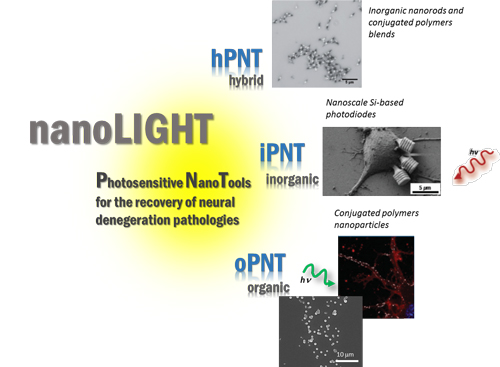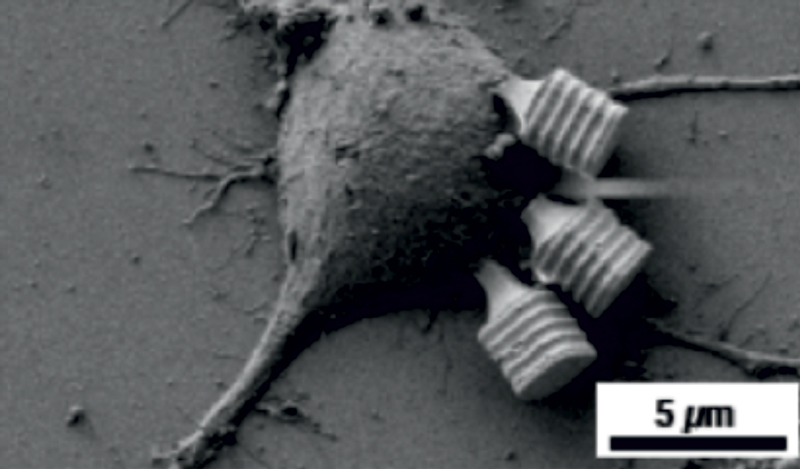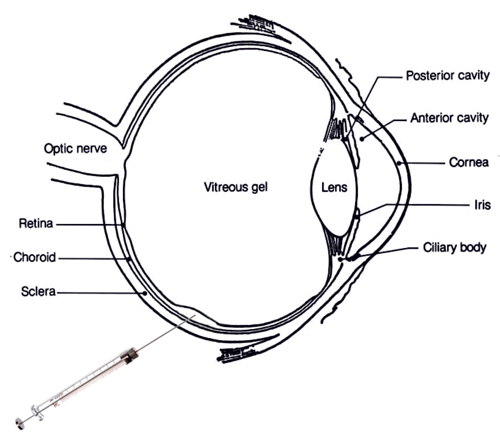
The grand challenge in biomedical engineering is to develop methods for interfacing light stimuli with the nervous system. nanoLight will exploit the revolutionary concept of focalized neuronal stimulation without using microelectrodes or planar prosthetic devices and avoiding genetic manipulations. The goal is to compensate for nervous system pathologies in which neuronal degeneration has induced a specific loss of function.

This will be achieved by the use of novel photosensitive nanotools (PNTs) that can be delivered to the tissue with minimally invasive microinjections and anchored to the membranes of target neurons to convert light stimuli into an electrical stimulation. The project will focus on three parallel strategies exploiting both organic and inorganic PNTs: organic PNTs based on conjugated polymers (oPNTs); inorganic PNTs based on silicon photodiodes (iPNTs); and hybrid PNTs based both on inorganic semiconductors and conjugated polymers (hPNTs).

PNTs will be surface-functionalized to stably interact with the plasma membrane and will mediate light-evoked activation of neuronal circuits. Preliminary results show that 1st generation iPNTs and oPNTs are not endocytosed and preserve their extracellular location in cells for long time.


We also have preliminary clues on the role of photogenerated charges in the photo-transduction process and in the resulting neuronal activation. In view of therapeutic applications to human diseases, nanoLight PNTs will target photoreceptor degeneration in Retinitis Pigmentosa (RP) and age-related macular degeneration (AMD).